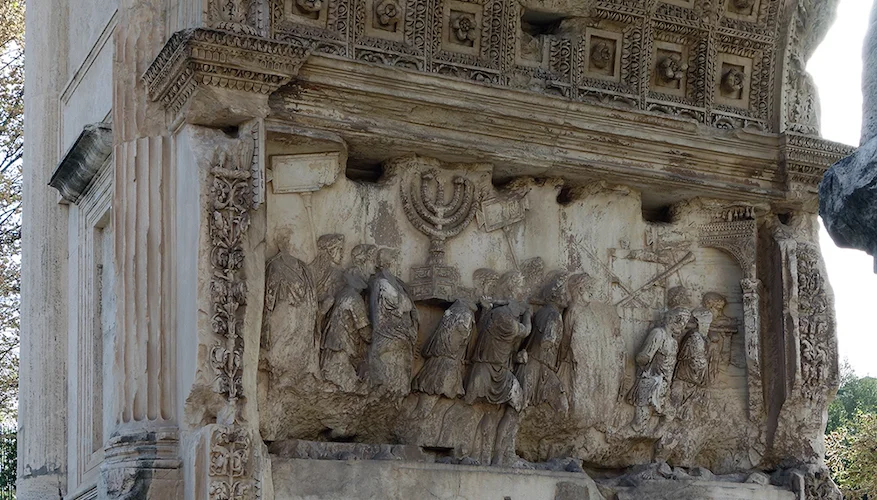The original menorah that you use at Hanukah went missing around 1,600 years ago. We know the Romans had it last. Was it destroyed? Misplaced? Hidden in the Vatican? There are all kinds of rumors, feel free to pick your favorite.
WHAT’S MISSING
The original menorah from the Second Temple.
The Second Temple menorah was probably created when the Temple was built in the early 6th century BCE. This is the same menorah from the Hanukah story that the Maccabees would have managed to keep lit for eight days (the miracle of Hanukah). In the first century CE, when the Romans sacked Jerusalem and destroyed the Second Temple, they carted off its ritual objects and treasures to Rome, as immortalized in the Arch of Titus in the Roman Forum. There the menorah stayed until Rome itself fell in the 5th century, and then almost all traces of the menorah disappeared from the historical record.
WHY WE CARE
The Temple menorah is not only one of the most important ritual objects in Jewish history, but the menorah itself is one of the definitive symbols of Judaism. The Jewish Star has only been associated with Judaism for a few hundred years, whereas the menorah can be found stamped on Jewish places going back thousands of years. The original menorah was built to exact specifications by Moses, and was the light source for the Tabernacle, where the Ark of the Covenant was kept. Later the menorah was the main source of illumination for the holiest sanctuary of the First and Second Temples.
THEORIES ABOUT WHERE IT IS
There are numerous theories, but only one has any contemporary textual evidence.
During the sack of Rome, the menorah was tossed in the Tiber River and has since been swept away or buried.
The menorah, which was made of gold, was melted down for coins.
The menorah simply got destroyed somewhere along the way.
The menorah was taken to Carthage by the Vandals, but then ended up in the hands of the Byzantine Empire when Carthage was sacked. Emperor Justinian, bowing to superstition that the menorah was cursed, sent it off to Jerusalem, where it disappeared (destroyed or stolen) when the Persians took Jerusalem in the 7th century CE. This is the theory with some textual evidence.
The Vatican ended up with it after the fall of Rome, and has kept it hidden in the Vatican Archives ever since.
FUN FACTS
Detailed analysis of the menorah depicted on Rome’s Arch of Titus found traces of yellow paint — which is how we can be reasonably sure that the menorah was made of gold, as described in the Hebrew Bible.
The last definitive mention of the menorah comes from the second century CE, when Rabbi Simeon ben Yochai reported seeing the menorah in Rome.
The Renaissance artist Raphael depicted the menorah in his 1513 Expulsion of Heliodorus fresco inside the papal apartments at the Vatican.
The Temple Institute in Jerusalem has built an exact replica of the original menorah — including $3 million worth of 24-karat gold — and placed it on display in the Jewish Quarter of the Old City.
© Jason Harris 2019
A menorah carved into a cobblestone, indicating a Jewish place of business around 2,000 years ago in the ancient city of Tzippori. Photo credit: Jason Harris
The Arch of Titus in the Roman Forum, depicting Roman soldiers carrying off the menorah and other Temple treasures from 70 CE. Photo credit: Wikipedia.
The Temple Institute’s replica of the menorah in the Old City, done to exact biblical specifications. It contains millions of dollars of gold, weights half a ton, and is protected by bullet-proof glass. Photo credit: Jason Harris
Music
Erran Baron Cohen, “Hanukkah Oh Hanukkah” Spotify
Yamma Ensemble, “Psalms 104” Spotify YouTube (Live)
Brandon Fiechter, “Epic Roman Music — Nero” Spotify
Matisyahu, “Happy Hanukkah” Spotify



